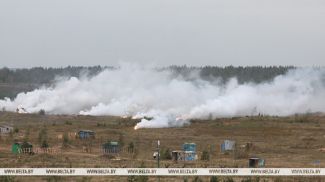MINSK, 16 February (BelTA) – The Belarusian Labor and Social Security Ministry reviewed the situation on the labor market in 2020, BelTA has learned.
Last year 152,700 people applied for assistance to the labor, employment and social security bodies (85.6% as against 2019), of which 70,700 people were registered as unemployed (76.7% as against 2019). A total of 117,600 people were placed into jobs, including 50,600 unemployed people. 4,400 people were sent for training and retraining courses, 33,500 people were assisted in organizing business.
The average picture of an unemployed Belarusian (registered officially) is a man of 35-49 years. Yet there were a lot of men aged 55-57 looking for work too. Of the total number of the unemployed, only 18.7% were young people aged 16-30 and 37.3% were women.
During the year the rate of unemployment had its ups and downs. A sharp decline was seen in April 2020, with 6,200 in new unemployed in October, and 4,000 at the end of the year. The out-of-job period rate was 2.9 months on average.
As a result, the number of unemployed registered with the labor, employment and social security bodies was 7,200 as of 1 January 2021, which was 18% fewer than on 1 January 2020.
The registered unemployment rate as of 1 January 2021 was 0.2% of the labor force (the same as a year prior). The situation was worst in two districts of Vitebsk Oblast: Postavy District and Polotsk District (more than 0.5%).
As it has been reported, the list of areas with a tense situation in the labor market included 29 districts (22.7% of the total number of administrative and territorial units) in 2020 and 53 in 2019. Brest Oblast, Gomel Oblast and Mogilev Oblast has 3 such districts each. There are two districts in Grodno Oblast. Most of these territories are in Vitebsk Oblast and Minsk Oblast (9 districts each).
The tensions factor in the labor market (the number of unemployed per vacancy) remains– 0.1. At the beginning of this year, employers registered 72,000 vacancies, or 86.1% of the vacancies in the national database a year earlier. The need for blue-collar workers accounted for 61.5% of the total number of vacancies.
The top 10 most-sought blue-collar workers were drivers, shop assistants, cleaners, seamstresses, cook, orderlies, cashiers, freight handlers, bricklayers, electrician for repair and maintenance of electrical equipment. Most sought-after white-collar workers were nurses, specialist doctors, engineers, medical laboratory technicians, vets, foresters, etc. At the same time, in rural areas, employers were more likely to look for tractor drivers, machine milking operators, livestock breeders, veterinarians, zoo technicians.













